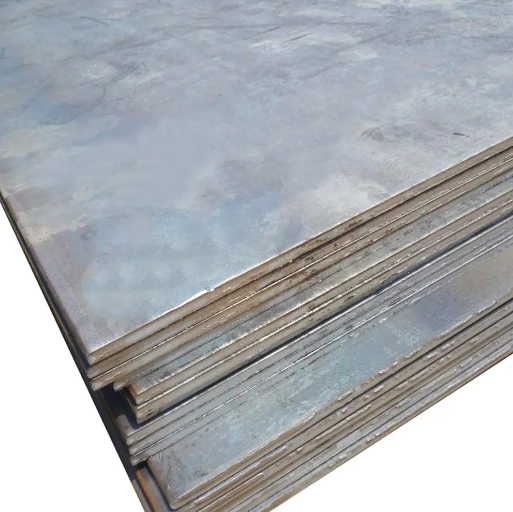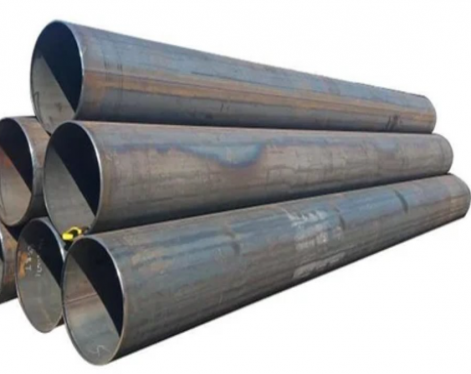Wear resistance and indentation resistance are very important properties of carbon steel plates, especially mild steel plates. When deciding which plate to choose, hardness is an important consideration. In order to ensure that the hardness of the mild steel plate is appropriate, a surface hardening process is often used to change the surface hardness.
Surface hardening refers to a treatment method that hardens the surface of a metal part by appropriate methods, but the core still retains strong toughness. Through surface hardening, the wear resistance and fatigue resistance of the steel sheet can be significantly improved. Commonly used surface hardening methods include: carburizing quenching, nitriding, surface quenching, etc.
Carburizing uses special carburizing steel. During design, the material and carburizing layer depth can be selected according to the workpiece size and core strength requirements; excessive use of materials and increased carburizing layer depth should not be used, otherwise it will increase production costs.
Quenching is to heat the mild steel plate to a very high temperature and then cool it quickly, usually by immersing the material in oil or water, or exposing it to a cold air flow.
Rapid cooling "locks" the microstructural changes that occur when the steel plate is heated, resulting in extremely high hardness of the parts.The quenching process is low-cost, simple and flexible, and has been widely used in the modern machinery manufacturing industry. Important parts in machinery, especially steel parts used in automobiles, aircraft, and rockets, are almost all quenched.The quenching effect is obvious for steel or iron with sufficient carbon content. If the carbon content is low, other steps such as nitriding and carburizing can be performed.
Nitriding is a chemical heat treatment process that allows nitrogen atoms to penetrate into the surface of low-carbon steel plates at a certain temperature and medium. Nitriding is usually carried out in a nitriding furnace to form a layer of nitride on the surface that is very hard and corrosion-resistant. There are generally gas nitriding, liquid nitriding and ion nitriding.
The biggest feature of the nitriding process is that the heat treatment deformation is small and the hardened layer is shallow. It is suitable for parts working under cyclic loads, such as shafts. Compared with quenching, it reduces the probability of deformation.
Bake Hardening is a hardening method that is particularly suitable for ultra-low carbon steel or steel plates containing trace alloying elements. This technology utilizes the strain hardening phenomenon that the steel plate undergoes during the forming process, and then further enhances this effect through a baking process.
1. What is the surface hardening of mild steel plate?
Surface hardening refers to a treatment method that hardens the surface of a metal part by appropriate methods, but the core still retains strong toughness. Through surface hardening, the wear resistance and fatigue resistance of the steel sheet can be significantly improved. Commonly used surface hardening methods include: carburizing quenching, nitriding, surface quenching, etc.

2. How to harden mild steel plate?
(1) Carburizing
Carburizing refers to the process of infiltrating carbon atoms of low carbon steel plate into the surface layer of steel. Through carburizing, it is beneficial to make the low carbon steel workpiece have a high carbon steel surface layer. After quenching and low temperature tempering, the surface layer of the workpiece has high hardness and wear resistance, while the center of the workpiece still retains the toughness and plasticity of low carbon steel.Carburizing uses special carburizing steel. During design, the material and carburizing layer depth can be selected according to the workpiece size and core strength requirements; excessive use of materials and increased carburizing layer depth should not be used, otherwise it will increase production costs.
(2) Quenching
Quenching is to heat the mild steel plate to a very high temperature and then cool it quickly, usually by immersing the material in oil or water, or exposing it to a cold air flow.Rapid cooling "locks" the microstructural changes that occur when the steel plate is heated, resulting in extremely high hardness of the parts.The quenching process is low-cost, simple and flexible, and has been widely used in the modern machinery manufacturing industry. Important parts in machinery, especially steel parts used in automobiles, aircraft, and rockets, are almost all quenched.The quenching effect is obvious for steel or iron with sufficient carbon content. If the carbon content is low, other steps such as nitriding and carburizing can be performed.
(3) Nitriding
Nitriding is a chemical heat treatment process that allows nitrogen atoms to penetrate into the surface of low-carbon steel plates at a certain temperature and medium. Nitriding is usually carried out in a nitriding furnace to form a layer of nitride on the surface that is very hard and corrosion-resistant. There are generally gas nitriding, liquid nitriding and ion nitriding.The biggest feature of the nitriding process is that the heat treatment deformation is small and the hardened layer is shallow. It is suitable for parts working under cyclic loads, such as shafts. Compared with quenching, it reduces the probability of deformation.
(4) Bake Hardening
Bake Hardening is a hardening method that is particularly suitable for ultra-low carbon steel or steel plates containing trace alloying elements. This technology utilizes the strain hardening phenomenon that the steel plate undergoes during the forming process, and then further enhances this effect through a baking process.3.The summary for various surface hardening treatment methods of ms plate
| Hardening Method | Advantages | Disadvantages | Applicable Situations |
|---|---|---|---|
| Carburizing | (1)Increases surface hardness and wear resistance. (2)Forms a hard wear-resistant surface layer. |
(1)Expensive process. (2)Requires subsequent quenching and tempering. |
Suitable for parts subject to sliding wear, like gears and bearings. |
| Quenching | (1)Significantly increases hardness and strength. (2)Can be followed by tempering for toughness. |
(1)Risk of distortion and cracking. (2)Makes the core more brittle if not tempered. |
Ideal for tools and components requiring high hardness and wear resistance. |
| Nitriding | (1)Provides a hard, wear-resistant surface. (2)Improves fatigue strength and corrosion resistance. |
(1)Long process time (2)Limited to surface layer hardening |
Best for applications requiring high fatigue strength and resistance to wear and corrosion. |
| Bake Hardening (BH) | (1)Utilizes existing manufacturing processes. (2)Enhances formability and dent resistance. |
(1)Limited to low carbon steels. (2)Small increase in hardness compared to other methods. |
Particularly effective for automotive body panels to improve dent resistance without adding weight. |









